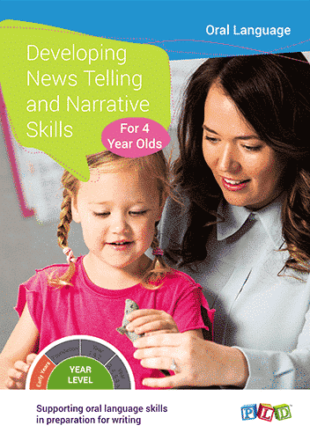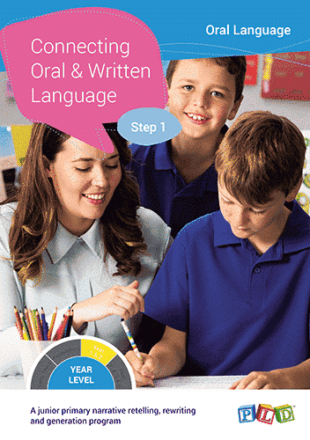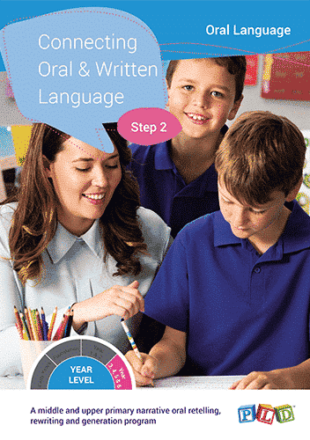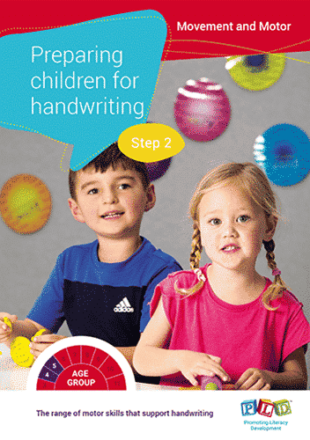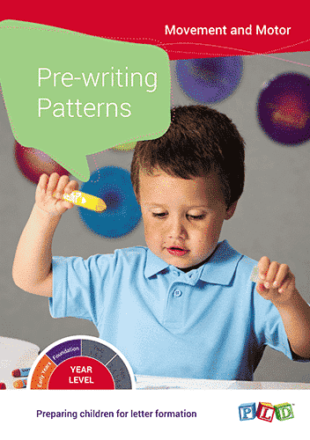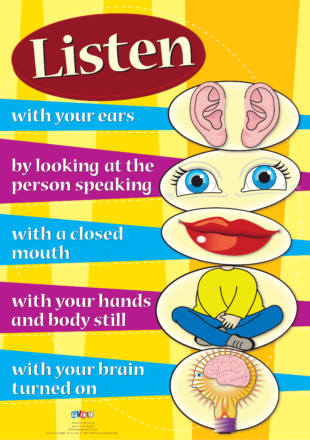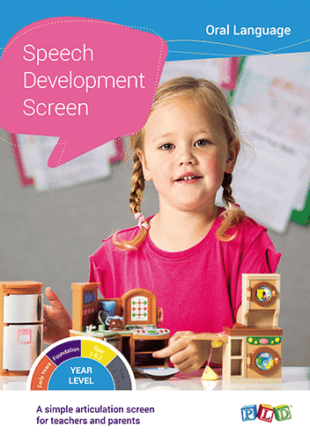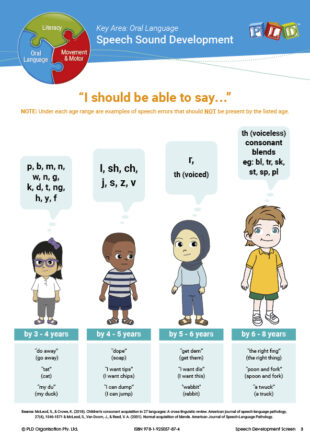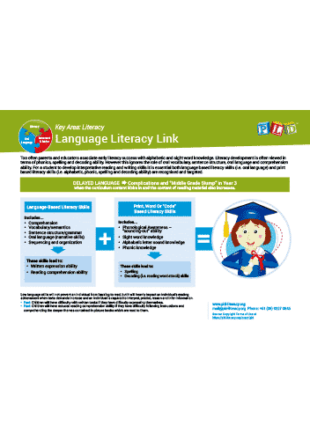Age
Showing 417–432 of 459 results
-
Developing News Telling and Narrative Skills For 4 Year Olds
Oral language preparation for writing including show and tell, activity retells & news telling.
Initially, all four-year-olds will require support with activity retells. However if after a period of teaching they appear anxious or produce inadequate information then they may need additional support and repetition to further develop their skills. That’s why we have created Developing News Telling and Narrative Skills for 4-Year-Olds. For students with delayed language it is recommended that concrete visual aids are used to assist in the organisation and sequence of the news telling. Initially, the retells will need to occur directly after the activity, this way the materials are still present to be used as visual cues and the sequence is relatively fresh. Before commencing the activity it is recommended that the task is demonstrated step by step and explained using the language that is to be targeted in the retelling by the students. This program has been developed by Speech Pathologists for use in the classroom or home instruction, to help parents and teachers instruct 4-year-olds oral language skills in the following areas: activity retells, show and tell (or object descriptions) and event-based news. Includes: Instructions for how to implement at a whole class, small group and individual level. Pre-tests and post tests-to review progress and to determine the children who would benefit from visits to a Speech Pathologist Supporting cards and posts included Instruction manual (78 pages) 3 sets of A5 colour cards 5 x A3 colour posters The programs within the range include: Early Years Programs: Picture Book Retelling – Step 1 Developing News Telling and Narrative Skills for 4 Year Olds Foundation Programs: Picture Book Retelling – Step 2 Developing News Telling and Narrative Skills for 5 Year Olds Year 1 & 2 Program: Connecting Oral and Written Language – Step 1 Year 3, 4, 5 & 6 Program Connecting Oral and Written Language – Step 2 This product is mentioned in the Early Years Teaching Sequence Manual on page 5 & 6.
$82.50$82.50 incl. GST[flipbook-popup id=''][/flipbook-popup] -
Developing News Telling and Narrative Skills for 5 Year Olds
Developing News Telling and Narrative Skills is an instruction manual with explicit details on how to develop show and tell, activity retells and news telling for 5 year olds
As children enter school as five-year-olds they continue to make the steps that move them from conversations to literate language. This can be a daunting step for all involved but Developing News Telling and Narrative Skills is designed to make the journey easier. The strategies used in this book are linked to later developing narrative skills, just as pre-literacy skills are the foundation skills for spelling and reading development. It is critical that teachers and parents assist children in the development of language and narrative skills as they are a crucial component and predictor of later interpretative reading and writing success. Developing News Telling and Narrative Skills attempts to break down news and early narrative skills into simple sequential steps for teachers and parents to follow with children. The program trains parents and teachers to identify where children need to develop and strengthen their skills and presents specific techniques and supports to do so. The program provides simple activities and visual cues that are designed to be incorporated into classroom and home environments utilising activities that occur every day. The program provides: assessment and monitoring procedures planning and programming supports visual supports and activity ideas techniques and strategies to develop and accelerate language skills. News telling is a challenge for students and teachers, however, practice is the key and the more students are exposed to the language associated with telling news the more their expressive language will improve. The programs within the range include: Early Years Programs: Picture Book Retelling – Step 1 Developing News Telling and Narrative Skills for 4 Year Olds Foundation Programs: Picture Book Retelling – Step 2 Developing News Telling and Narrative Skills for 5 Year Olds Year 1 & 2 Program: Connecting Oral and Written Language – Step 1 Year 3, 4, 5 & 6 Program Connecting Oral and Written Language – Step 2 This resource is mentioned in the Foundation Teaching Sequence Manual on page 13.
$82.50$82.50 incl. GST[flipbook-popup id=''][/flipbook-popup] -
Connecting Oral and Written Language – Step 1
Instructional material outlining how to teach 6 to 8 year olds narrative oral retelling, rewriting and generation.
Although there are many types of genres, the most complex genre is narrative. The production of a narrative is more cognitively and linguistically demanding than participation in a conversation. Research repeatedly reports that narrative programs positively impact overall reading comprehension and written expression ability. Hence once skills are developed in this area, there is a flow on effect to all other forms of comprehension and written work. Within Connecting Oral and Written Language – Step 1 the initial oral stage is incredibly important. From a Speech Pathology perspective, oral expression ability is the precursor to written expression ability. Too often students are required to generate narratives before solid foundation skills are established. Remember students need to be provided with multiple opportunities to analyse and orally retell familiar narratives. In this way, they are rehearsing and practicing their oral language skills and simultaneously developing a solid understanding of narrative structure. Remember do not underestimate the value of the initial oral stages of narrative skills development. This program, designed by Speech Pathologists for 6 to 8 year olds features: Narrative tasks are presented in an order of ascending complexity (i.e. pre-narrative, oral narrative retells, written narrative retells and finally narrative generation). The manual outlines how to instruct 6 to 8 year old narrative ability and recommends over 45 suitable picture books. The classroom pack includes explicit narrative structure cards and display posters The programs within the range include: Early Years Programs: Picture Book Retelling – Step 1 Developing News Telling and Narrative Skills for 4 Year Olds Foundation Programs: Picture Book Retelling – Step 2 Developing News Telling and Narrative Skills for 5 Year Olds Year 1 & 2 Program: Connecting Oral and Written Language – Step 1 Year 3, 4, 5 & 6 Program Connecting Oral and Written Language – Step 2 This product is mentioned in the Year 1 & 2 Teaching Sequence Manual on page 20.
$82.50$82.50 incl. GST[flipbook-popup id=''][/flipbook-popup] -
Connecting Oral and Written Language – Step 2
Connecting Oral & Written Language – Step 2 is an instructional material outlining how to teach 9 to 12 year olds to express themselves in a structured way
Although there are many types of genres, the most complex genre is narrative. The production of a narrative is more cognitively and linguistically demanding than participation in a conversation. Research repeatedly reports that narrative programs positively impact overall reading comprehension and written expression ability. Hence once skills are developed in this area, there is a flow on effect to all other forms of comprehension and written work. Within Connecting Oral and Written Language – Step 2 the initial oral stage is incredibly important. From a Speech Pathology perspective, oral expression ability is the precursor to written expression ability. Too often students are required to generate narratives before solid foundation skills are established. Remember students need to be provided with multiple opportunities to analyse and orally retell familiar narratives. In this way, they are rehearsing and practicing their oral language skills and simultaneously developing a solid understanding of narrative structure. Remember do not underestimate the value of the initial oral stages of narrative skills development. This program, designed by Speech Pathologists for 9 to 12 year olds features: Narrative tasks are presented in an order of ascending complexity (i.e. pre-narrative, oral narrative retells, written narrative retells and finally narrative generation). The manual outlines how to instruct 9 to 12 year olds narrative ability and recommends over 45 suitable picture books. The classroom pack includes explicit narrative structure cards and display posters The programs within the range include: Early Years Programs: Picture Book Retelling – Step 1 Developing News Telling and Narrative Skills for 4 Year Olds Foundation Programs: Picture Book Retelling – Step 2 Developing News Telling and Narrative Skills for 5 Year Olds Year 1 & 2 Program: Connecting Oral and Written Language – Step 1 Year 3, 4, 5 & 6 Program Connecting Oral and Written Language – Step 2
$82.50$82.50 incl. GST[flipbook-popup id=''][/flipbook-popup] -
Preparing Children for Handwriting – Step 2
The range of motor skills that support handwriting.
Early childhood education is a critical time for consolidating the fine motor skills necessary for efficient pencil grasp, developing good strong habits for directionality and pre-writing skills, making sense of increasing complex visual information and storing and retaining information for future use (memory). For this reason, we have created a 232-page Movement and Motor teaching guide to complement any early years program. The book contains clear information on developmental expectations for 4.5 and 5.5 year olds and the foundation skills necessary for handwriting development, with a guide to handwriting readiness in addition to a wide range of activity suggestions. Features: Developed by an Occupational Therapist, this resource provides early childhood workers and parents with easy-to-understand information and activities focused upon fine and gross motor skill development for Early Years students. Contains cutting, colouring, drawing, playdough, pre-writing, along with ball, balance, eye tracking, and body control activities. Expectations, support, and guidance on pencil grip and posture, among other skills. Starting your students with Preparing Children for Handwriting – Step 1 provides children with the essential preparation that is needed for letter formation. This resource is mentioned in the Foundation Teaching Sequence Manual on page 14.
$82.50$82.50 incl. GST[flipbook-popup id=''][/flipbook-popup] -
Pre-Writing Patterns
Preparing children for letter formation
Throughout the Early Years, children are encouraged to participate in a range of fine motor activities that develop: their manipulative skills a dominant hand the ability to use both hands together Introducing Pre-writing Patterns for 3 to 5 year olds which aids the smooth transition to writing alphabet letters. Pre-writing patterns presents a simple, systematic and fun approach for teaching the foundation skills that are necessary for fluent handwriting. This resource for parents and teachers provides information on posture, grasps, pencil control and pre-writing patterns. The manual outlines big body movements, art activities and pre-writing pattern worksheets. It outlines six basic movements that are essential for children to learn the pre-writing patterns used to make pictures and then combined to make letters and numbers. The six basic patterns that form the basis of all alphabet letters are: Sideways, sideways left to right. Tall lines and short lines. Zig Zags. Circles, drawn forwards and backward. Up and overs. Down and unders. Down, back and unders. This product is mentioned in the Early Years Teaching Sequence Manual on page 4 & 5.
$82.50$82.50 incl. GST[flipbook-popup id=''][/flipbook-popup] -
Am I ready to handwrite? A3 Poster
Am I ready to handwrite is a poster providing solid introduction to the beginning of handwriting
Ideal for student and teacher reference, this poster is designed to provide explicit instruction on the following: Letter formation and size Letter placement Reminders of
-
Listen A3 poster
To Create A Good Speaking And Listening Environment
Brainstorm with students what makes a good listener and speaker. Have a reward system that promotes good listening and speaking behaviours in the classroom. Give
-
Speak A3 poster
To Create A Good Speaking And Listening Environment
Brainstorm with students what makes a good listener and speaker. Have a reward system that promotes good listening and speaking behaviours in the classroom. Give
-
Speech Development Screen
A simple articulation screen for teachers and parents.
Designed by Speech Pathologists for use in early childhood centres, schools and the home. The screen is quick and simple to administer. The screen identifies
$82.50[flipbook-popup id=''][/flipbook-popup] -
Oral Language Concept Development – Ages 2 – 6
A milestone and information sheet which outlines the timeline for developing oral language concepts in children aged 2 to 6 years.
A downloadable poster covering the oral language developmental stages from aged 2 through to age 6. See our Copyright Terms of Use at https://pld-literacy.org/help-pages/copyright-policy/.
-
Speech Sound Development – 3 to 8 years old
The milestone poster/sheet details the age related milestones for speech sound development in children aged 3 to 8 years.
Many parents, early childhood workers and teachers will wonder if a child speech is normal. Most children’s speech becomes clearer gradually as they hear and
-
Language Literacy Link
A information sheet explaining the importance of targeting BOTH language based literacy (or oral language skills) and print based literacy skills (i.e. alphabetic, phonic, spelling and decoding ability) for the development of interpretative reading and writing skills.
Too often parents and educators associate early literacy success with alphabetic and sight word knowledge. A little later on in a child’s development literacy is
-
Supporting the Understanding of Questions
A fact sheet listing observations that indicate a child is experiencing difficulties with oral news telling and narrative retelling which may constitute a potential referral to a Speech Pathologist.
When asking a child questions it’s important to support and teach them what the question means and how you want them to answer it. If
-
Developing Cutting Skills Milestones – Ages 2 to 6 Years Old
A milestone sheet which identifies age based norms for developing cutting skills in children aged 3 to 6 years.
Over a period of several years, children progress through several steps when learning to cut with scissors. At age 2 – 2½ years… Child is
-
The Development of Appropriate Pencil Grip & Drawing Skills – 1 to 6 Years Old
These milestone and information sheets identify the age-related milestones for hand function, pencil grip (grasp) and drawing skills in children aged 1 to 6 years. They present images of good and NOT good pencil grip and also outline hints for making a good pencil grip easier.
When children first begin to draw using crayons, pencils or brushes they use a dagger grasp. In a natural developmental sequence, they will hold the



